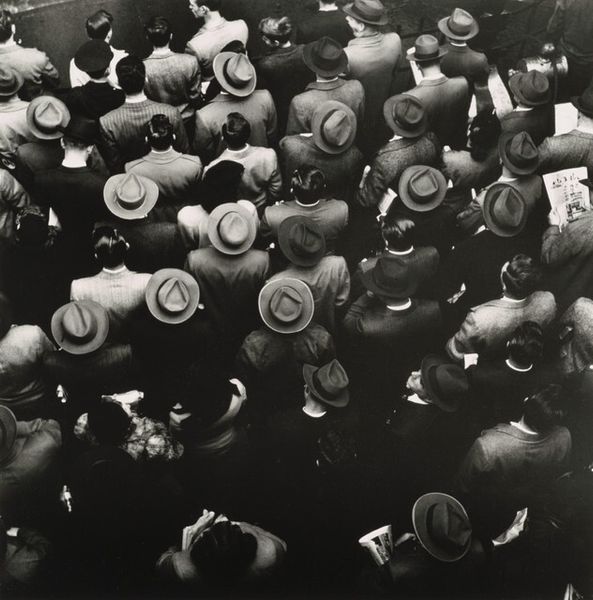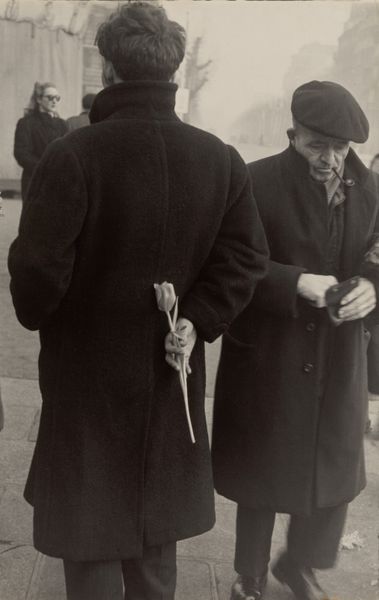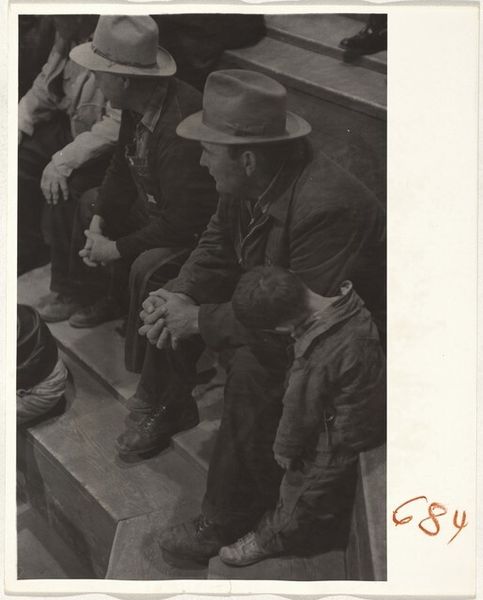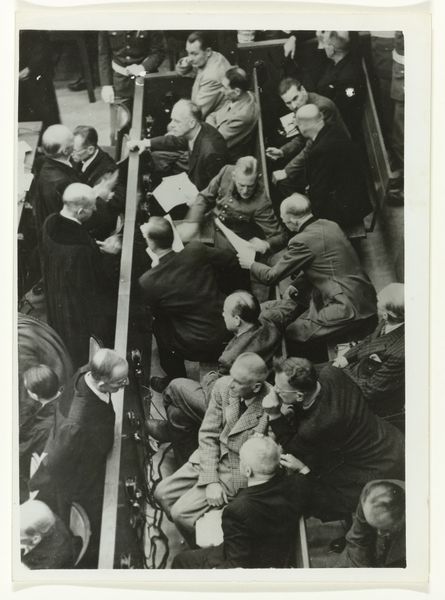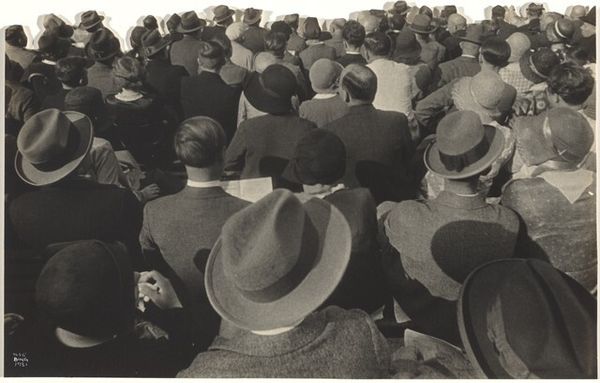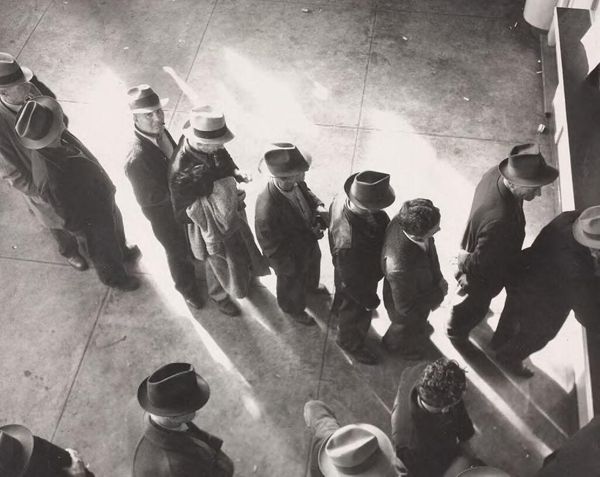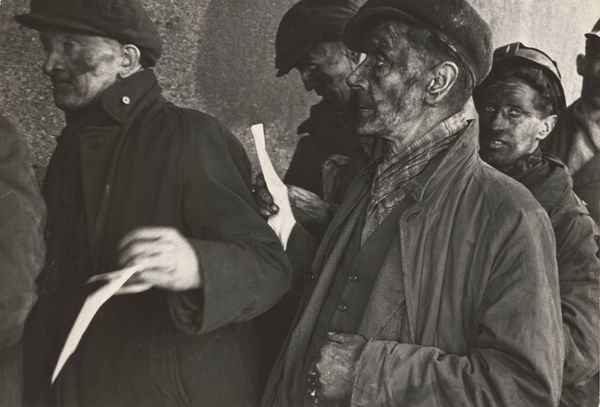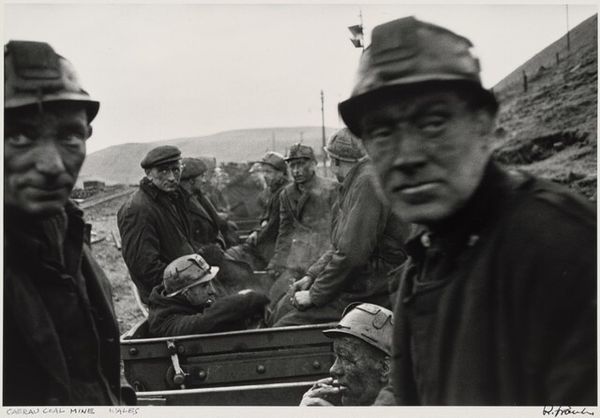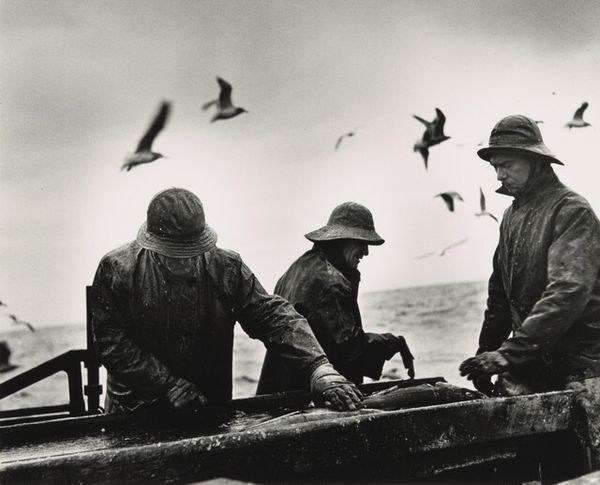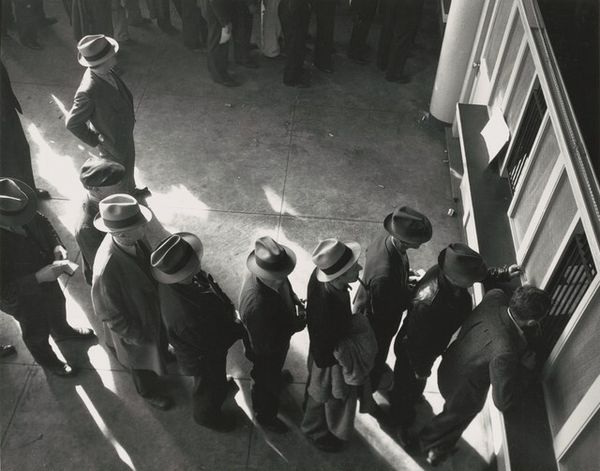
photography, gelatin-silver-print
#
portrait
#
black and white photography
#
social-realism
#
street-photography
#
photography
#
black and white
#
gelatin-silver-print
#
monochrome photography
#
ashcan-school
#
genre-painting
#
monochrome
#
realism
#
monochrome
Dimensions: image/sheet: 34 × 26.5 cm (13 3/8 × 10 7/16 in.)
Copyright: National Gallery of Art: CC0 1.0
Curator: Dorothea Lange’s "White Angel breadline, San Francisco, California," a gelatin silver print made in 1933. It's a rather sombering image at first glance. Editor: Somber is right. What immediately strikes me is the sheer density of figures and the palpable sense of despondency radiating from the man at the forefront. There's something immensely tragic about his bowed head and the empty cup in his hands. Curator: The cup certainly operates as a poignant symbol here, it's a modern day begging bowl which emphasizes themes of dispossession and resilience. And consider the backdrop itself; San Francisco represented prosperity but even it suffered. The “White Angel” mentioned in the title? She was a wealthy woman, largely forgotten, who once served free meals there. Editor: Yes, that small detail of her title against the masses evokes a much larger dynamic: one benefactor set against an enormous need. The sign above the breadline feels incredibly relevant, like a constant reminder of the world outside their predicament: the Golden Gate, success, all frustratingly out of reach for these men during the Depression. There’s a collective symbolism here of despairing, anonymous men. Curator: Anonymous yet strikingly individual. While the photograph indeed captures a mass of people, Lange masterfully brings forth particular expressions in each of them, even at the very edges of the frame, faces searching, some proud, but there is that recurring theme of hopelessness. Look closer and see that one solitary gentleman, clearly unwilling to ask for a free meal like the others, separated physically and emotionally. It underscores that fine, and often brutal, line between dignity and desperation. The way he stares is like the silent majority in that situation. Editor: He embodies both the hope and futility of the American Dream. In these kinds of circumstances, visual culture truly does become a form of collective memory. In its time, images like these influenced public perception of economic hardship and urged widespread support for the New Deal. In fact, even today, the image persists, as an emblem of hope within struggle, and indeed of human resilience. Curator: A shared moment, indelibly etched in history and in our consciousness. This singular piece of art makes one ask how such historical images are interpreted and remembered within contemporary culture and social issues. Editor: Absolutely, images such as these shape policy decisions, impact individual and cultural viewpoints, and provide lasting iconography.
Comments
No comments
Be the first to comment and join the conversation on the ultimate creative platform.
